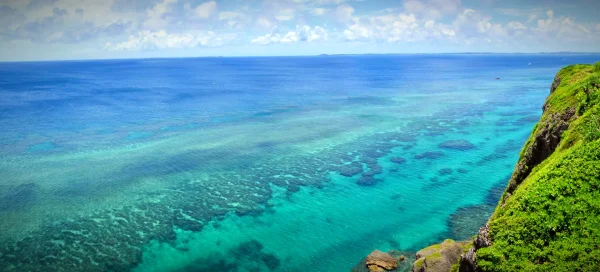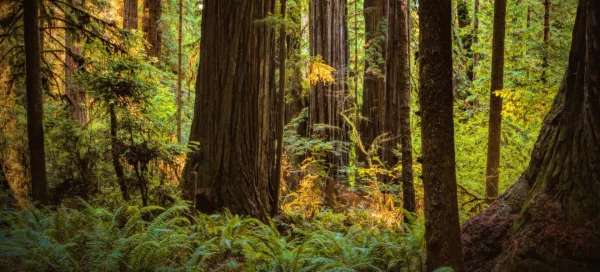Overview
The Maned Duck, also known as the Australian Wood Duck or Chenonetta jubata, is a distinctive species of dabbling duck native to Australia. Unlike many other ducks, it showcases a unique appearance, with males having a dark brown head, mottled grey-brown body, and a prominent mane of feathers along the neck. At the same time, females feature a lighter brown head with two white stripes above and below the eye and a more uniformly grey-brown plumage. Both sexes have stubby tails and powerful, broad wings visible in flight, characterized by striking white underwing patterns. This medium-sized species ranges from 45 to 51 cm, making it one of the larger ducks encountered in its native habitats.
Maned Ducks are highly adaptable and can be found in various habitats across Australia, from natural wetlands to open grasslands and even urban parks and gardens, where water and food are abundant. They are known for their terrestrial feeding habits, grazing on grass, clover, and other plants, as well as occasional insects and aquatic vegetation. Their adaptability to different environments has made them common in rural and urban areas, where they often form small flocks or pairs.
Breeding typically occurs in the spring and summer months, with these ducks forming monogamous pairs that can last several seasons. Nests are usually located in tree hollows or similar sheltered locations off the ground, a strategy that protects them from predators. Females lay a clutch of 7-12 creamy-white eggs, which they incubate for about 28-30 days. Ducklings are precocial and leave the nest within a day of hatching, following their parents to water, where they learn to forage under their careful supervision.
Taxonomy
Kingdom
Phylum
Class
Order
Family
Genus
Species
Type
Physical Description:
The Maned Duck exhibits sexual dimorphism in plumage. Males have a dark brown head and a ‘mane’ of feathers along the neck, with a predominantly grey body featuring black barring and subtle hints of brown. Females are distinguished by their lighter brown heads, distinctive white stripes above and below the eye and a more uniform grey-brown body without the male’s mane. Both sexes possess strong, orange legs and feet and a dark grey to black bill suited for their dabbling and grazing feeding habits.
Their size and build facilitate a more terrestrial lifestyle than many other duck species, allowing them to efficiently forage in grasslands and open fields. The Maned Duck’s wings are equipped with sharp spurs, which the males use in defense against predators or rivals. In flight, their white underwing feathers become prominent, contrasting beautifully with the dark upper wing feathers, making them easily identifiable from a distance.

Lifespan: Wild: ~5 Years || Captivity: ~10 Years

Weight: Male: 1.5-2.4 lbs (700-1100 g) || Female: 1.4-2.2 lbs (650-1000 g)

Length: Male & Female: 18-20 inches (45-51 cm)

Wingspan: Male & Female: 26-33 inches (66-85 cm)

Top Speed: 45 mph (72 km/h)
Characteristic:
Native Habitat:
The Maned Duck is native to Australia, occupying many habitats, from freshwater wetlands and rivers to open grasslands and agricultural fields. They have shown remarkable adaptability, thriving in modified landscapes such as golf courses, urban parks, and gardens, as long as they have access to water for roosting and feeding. Their preference for nesting in tree hollows also leads them to woodland areas, highlighting their versatility in habitat selection.
Despite their wide distribution, Maned Ducks prefer habitats that offer water sources and adjacent open lands for grazing, embodying their unique lifestyle among waterfowl. Conservation of these habitats is crucial for sustaining healthy populations, particularly in regions where natural wetlands are diminishing.
Biogeographical Realms:
Continents:
Countries:
Diet:
Diet & Feeding Habits:
Maned Ducks are omnivores with a diet that heavily leans towards plant matter, including grass, clover, and other green vegetation, which they graze on in open fields and lawns. They also consume aquatic plants, seeds, insects, and occasionally small animals. Their feeding habits are more terrestrial than other ducks, often seen foraging in pairs or small family groups in the early morning or late afternoon to avoid the day’s heat.
In urban and suburban areas, they have adapted to feeding on human handouts, although natural foods remain their preference for nutritional needs. Their ability to exploit various food sources across both land and water contributes to their widespread presence and success in varying environments across Australia.
Mating Behavior:
Mating Description:
Maned Ducks are monogamous, with pairs often forming long-term bonds lasting for several breeding seasons. Their breeding season is flexible, primarily from August to December, but can extend based on environmental conditions such as rainfall and food availability. Courtship involves vocalizations, head-bobbing, and displays of the male’s mane, strengthening pair bonds and establishing breeding territories.
Nests are typically situated in tree hollows or similar elevated cavities, protecting from ground predators. This preference for arboreal nesting sites is unusual among ducks and highlights the Maned Duck’s adaptability. After laying a clutch of 7-12 eggs, the female alone incubates them for about 28-30 days while the male remains nearby to defend the territory. Ducklings can swim and feed themselves shortly after hatching but rely on parental guidance and protection for the first few months of life.
Reproduction Season:
Birth Type:
Pregnancy Duration:
Female Name:
Male Name:
Baby Name:
Social Structure Description:
Maned Ducks are sociable birds, often seen in pairs or small family groups, particularly during the breeding season. Outside of breeding times, they may form larger flocks, especially in areas where food resources are abundant. Their social behavior includes a variety of vocal and physical displays, which help maintain group cohesion and communication.
While they are generally peaceful, competition for food and nesting sites can lead to aggressive interactions, particularly among males. The strong pair bond between mated ducks is a key aspect of their social structure, with pairs often remaining together for multiple breeding seasons, demonstrating a high level of social fidelity.
Groups:
Conservation Status:
Population Trend:
Maned Ducks are among Australia’s most common and widely distributed waterfowl, with stable and healthy populations across their range. Their success is attributed to their adaptability to various environments and changes in landscape use. While they face few natural threats, habitat loss and degradation pose potential risks, particularly in areas where wetlands are drained for agriculture or urban development.
Conservation efforts are focused on habitat preservation, particularly the protection of wetlands and waterways, which are crucial for ecological balance and biodiversity. Public awareness and involvement in conservation programs help protect the Maned Duck and its habitat, contributing to the species’ ongoing success in Australia.
Population Threats:
The primary threats to Maned Ducks include habitat loss due to agricultural expansion, urbanization, and the draining of wetlands. Predation by introduced species, such as foxes and feral cats, can impact nesting success in some areas. Pollution of waterways and the spread of invasive plant species also threaten their habitats.
Despite these challenges, Maned Ducks have shown resilience and an ability to adapt to changing environments. Continued conservation efforts and habitat management are essential to mitigate these threats and ensure the species’ long-term survival.
Conservation Efforts:
Conservation initiatives for the Maned Duck focus on protecting and restoring wetland habitats, managing water resources, and controlling invasive species. Efforts to maintain and enhance the quality of public parks, golf courses, and other green spaces also benefit this species, providing additional feeding and breeding sites.
Environmental education programs that promote the importance of wetlands and the conservation of native species play a key role in engaging the public and fostering a culture of protection and respect for wildlife. Research and monitoring are ongoing to better understand the ecology of the Maned Duck and inform conservation strategies, ensuring that this iconic Australian bird continues to thrive.
Additional Resources:
Fun Facts
- Maned Ducks are one of the few duck species that can nest in tree hollows, a trait more commonly associated with parrots and other tree-nesting birds.
- They have a distinctive, whistling call, quite different from the quacks typically associated with ducks.
- Despite being capable swimmers, Maned Ducks spend much of their time on land, grazing like geese.
- Their adaptability to urban environments has made them familiar in Australian cities, often seen in parks and gardens.
- The spurs on the wings of male Maned Ducks are used in defense against predators and rivals, a unique feature among ducks.
- They are one of Australia’s most widespread and commonly observed waterfowl, thanks to their adaptability and the broad range of habitats they occupy.
- Unlike many waterfowl that migrate long distances, Maned Ducks are largely sedentary, with local movements influenced by food availability and breeding conditions.
- The name “Maned Duck” comes from the mane-like feathers found on the male’s neck, which are most prominent during the breeding season.
- They are known for their strong pair bonds, with mated pairs often seen foraging and moving together throughout the year.
- Maned Ducks play an important role in their ecosystems, helping to control vegetation through grazing and serving as prey for larger predators.




















































































